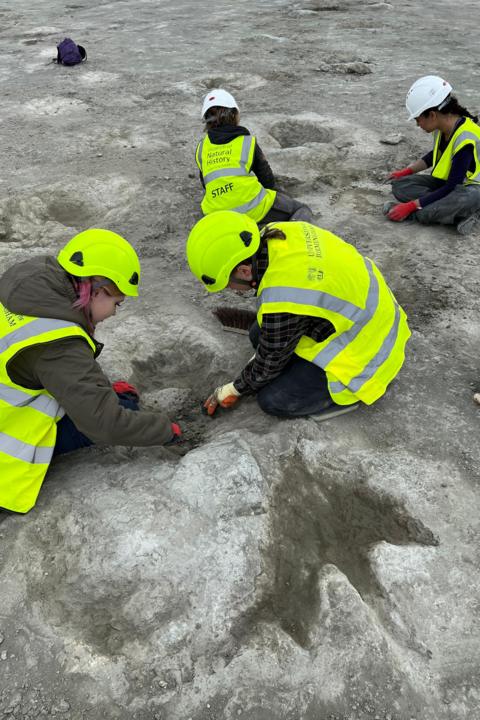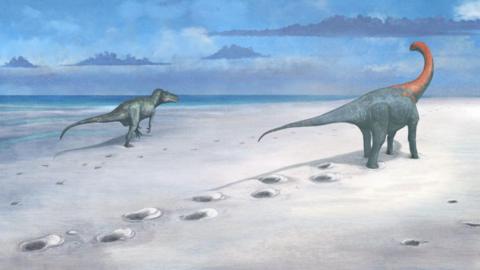The UK's biggest ever dinosaur trackway site has been discovered in a quarry in Oxfordshire.
About 200 huge footprints, which were made 166 million years ago, criss-cross the limestone floor.
They reveal the comings and goings of two different types of dinosaurs that are thought to be a long-necked sauropod called Cetiosaurus and the smaller meat-eating Megalosaurus.
The longest trackways are 150m in length, but they could extend much further as only part of the quarry has been excavated.

